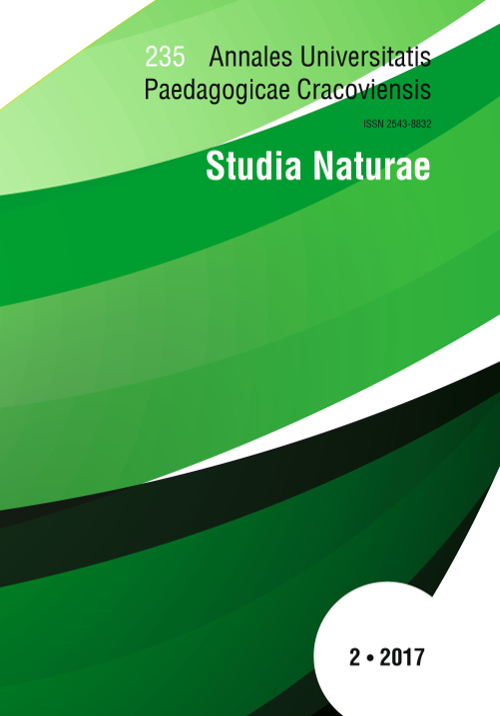The yield of Jerusalem artichoke plant Helianthus tuberosus L. grown in various combinations of fertilisation – preliminary research
DOI:
https://doi.org/10.24917/25438832.2.7Keywords:
Jerusalem artichoke, Helianthus tuberosus L. cv. Albik, cv. Rubik, biochar, size and numbers of tubersAbstract
Jerusalem artichoke is a perennial plant, which originates from North America. Tubers are characterised by high nutritional and energy values and can therefore be a source of food for humans and animals. The interest in tubers of Helianthus tuberosus L. in the diet of man is primarily due to the content of inulin and fructooligosaccharides, minerals, vitamins, and amino acids in them. In addition, it is a plant that is not demanding in agrotechnical conditions. Hence, the interest in cultivation this plant has increased. The main objective of the experiment was to evaluate the effect of biochar on the average yield of tubers and some morphological characteristics of plants. The study was conducted in conditions of a field experiment in 2016 at the Experimental Station of the University of Agriculture in Kraków. Two varieties: ‘Albik’ and ‘Rubik’, were grown in the experiment with different fertilisation variants. Biochar from the coniferous wood industry and mineral fertilisers were used. The ‘Rubik’ variety yields better than the ‘Albik’ variety under tested soil conditions, and the combined use of biochar and the basic dose of mineral fertilisation gives the best yields in the cultivation of Jerusalem artichoke.
Downloads
Metrics
References
Antonkiewicz, J., Jasiewicz, Cz. (2003). Ocena przydatności topinamburu (Helianthus tuberosus L.) do fitoremediacji gleby zanieczyszczonej Cd. Pb. Ni. Cu i Zn. Archiwum Ochrony Środowiska, 29(4), 81–87. [In Polish]
Cieślik, E. (1998). Zawartość składników mineralnych w bulwach nowych odmian topinamburu (Helianthus tuberosus L.). Zeszyty Naukowe AR im. H. Kołłątaja w Krakowie, 342, 23–30. [In Polish]
Cieślik, E., Filipiak-Florkiewicz, A. (2000). Topinambur (Helianthus tuberosus L.) – możliwości wykorzystywania do produkcji żywności funkcjonalnej. Żywność. Nauka. Technologia. Jakość, 7(1), 73–81. [In Polish]
Florkiewicz, A., Cieślik, E., Filipiak-Florkiewicz, A. (2007). Wpływ odmiany i terminu zbioru na skład chemiczny bulw topinamburu (Helianthus tuberosus L.). Żywność. Nauka. Technologia. Jakość, 3(52), 71–81. [In Polish]
Jasińska, Z., Kotecki, A. (2003). Szczegółowa uprawa roślin. Tom 1. Wrocław: AXA, 383–392. [In Polish]
Kays, S.J., Nottingham, S.F. (2008). Biology and chemistry of Jerusalem artichoke Helianthus tuberosus L. CRC Press, 1–27.
Kocsis, L., Kaul, H.-P., Praznik, W., Liebhard, P. (2007). Einfluss des Erntetermins auf den Kraut- und Knollenertrag unterschiedlicher Sorten von ‘topinambur’ (Helianthus tuberosus L.) im semiariden Produktionsgebiet Österreichs. Pflanzenbauwissenschaften, 11(2), 67–76. [In German]
Makowski, D. (2014). Topinambur – uniwersalna roślina. http://www.farmer.pl/produkcja-roslinna/inne-uprawy/’topinambur’-8211-uniwersalna-roslina.51868.html [In Polish]
Piskier, T. (2004). Topinambur – alternatywne źródło energii. Czysta energia, 12, 12–13. [In Polish]
Podlaski, S., Chołuj, D., Wiśniewski, G. (2010). Produkcja biomasy z roślin energetycznych. Postępy Nauk Rolniczych, 2, 163–174. [In Polish]
Prośba-Białczyk, U. (2007). Produkcyjność topinamburu (Helianthus tuberosus L.) uprawianego bez nawożenia. Fragmenta Agronomica (XXIV), 4(96), 106–112. [In Polish]
Tokarska-Guzik,. B., Dajdok, Z., Zając, M., Zając, A., Urbisz, A., Danielewicz, W., Hołdyński, Cz. (2012). Rośliny obcego pochodzenia w Polsce ze szczególnym uwzględnieniem gatunków inwazyjnych. Warszawa: Generalna Dyrekcja Ochrony Środowiska, p. 197. [In Polish]
Tokarska-Guzik, B., Dajdok, Z., Zając, M., Urbisz, A.. Danielewicz, W. (2011). Identyfikacja i kategoryzacja roślin obcego pochodzenia jako podstawa działań praktycznych. Acta Botanica Silesiaca, 6, 23–53. [In Polish]

